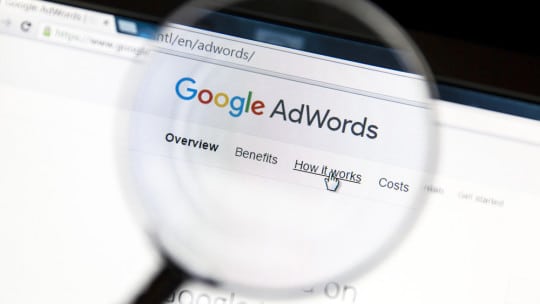

Google AdWords can be a powerful tool to leverage as part of an organization’s online search strategy. As nonprofits often have limited budgets and resources, Google Ad Grants (www.google.com/grants/) provides eligible nonprofits an opportunity to build and execute AdWords campaigns at no cost. While there are limitations on ad placement and maximum bids, Google Ad Grants can be a powerful tool to help nonprofits drive results, increase awareness and drive business outcomes.
Pre-Program Planning: Establish Goals
Similar to any marketing and communications effort, your Google Ad Grants program should be tied to your organization’s strategy. It is important to establish SMART (Specific, Measurable, Attainable, Realistic, and Time-Based) goals that will help gauge your success. For example, goals could include increasing volunteer sign-ups by X% via the web or raising site traffic by Y% to your web site’s donation page.
Pre-Program Planning: Tactical Set-Up
Once you have established your goals, you will want to assess your digital infrastructure and make necessary updates before creating an AdWords campaign. This process should begin with an inventory of your organization’s digital assets or content archive. While this may a tedious and time-consuming step, it will provide you with a wealth of content to pull from and ensure that you are delivering information people want and need in a format that solicits the best response.
Create and/or Update Landing Pages
Now that you have a better understanding of your digital assets, it is essential to look at the landing pages that you intend to drive traffic to through your ads. Too often, nonprofits make the mistake of driving all traffic to their organization’s home page. To achieve your goals, you will want to be strategic as to where you send visitors with your ads.
If the goal is to increase volunteer sign-ups, for example, your ad should take visitors to a landing page that provides information on volunteer opportunities. Build out such a page if your organization lacks one prior to campaign launch.
Consider reviewing each goal, then map out content needed to meet these objectives. The ultimate goal is to employ existing digital assets to create landing pages that convert visitors in alignment with your objectives.
Conduct Keyword Research
As you build out your landing pages, it is also important to conduct keyword research in parallel. Ideally, your target keywords will be embedded within your landing pages and eventually in the ads you create.
To get started, consider using a keyword research tool such as Google’s Keyword Planner. Tools like these enable marketers to search for additional and relevant keywords that may not be top of mind. For example, if your organization works on childhood hunger, you could use “child hunger” as your initial search term and see what additional results surface.
As you are given a max CPC bid of $2 within the Google Ad Grants program, the competition for some keywords may be too expensive, which makes it essential to have a long list of keywords. While creating your keyword list, you will want to make sure these words appear on your various website pages, which will make the ads you create more relevant.
Program Execution: Campaigns
After doing the appropriate campaign planning, you can set up your AdWords campaign. As a best practice, consider creating separate campaigns for each of your goals. For example, if you have goals around volunteers, donations and e-newsletter sign-ups, create separate campaigns for each.
Every campaign is comprised of one or more ad groups. An ad group contains multiple ads that share the same set of keywords as well as a theme.
The number of campaigns and ad groups you create should be dictated by your business objectives. As a guide, however, ad groups should contain 15-30 similar keywords.
Program Execution: Creating Ads
As Google Ad Grants allows for text-based ads only, make sure your ad copy is as succinct, relevant and impactful as possible. Start with headlines that are ultra-relevant to user searches. To do this, create ad variations that include your exact keyword(s). Every ad should have at least three variations, incorporating different keywords in each version. Review the performance of all your ads monthly and remove the worst performer. Be sure to replace the ad removed so that you are always cycling in new material for optimal success.
Within the ad copy, consider using statistics to capture attention. As you are unable to include images, compelling statistics could be very powerful in telling your story. Statistics in your ad should be carried over to the landing page where you are directing traffic. Doing this will make your ad more relevant and content easier for the search engines to find.
Perhaps most important, your ad needs to include a clear CTA. What will a user gain by clicking on your ad? Every ad should answer this question in no uncertain terms. Be sure your ad directs users to a specific landing page on your site that relates to the ad content. If a user clicks your ad, the content delivered should not surprise him/her. Having landing pages directly connected to your CTAs also will help increase conversion rates.
CONTACT: @ABlessing111
